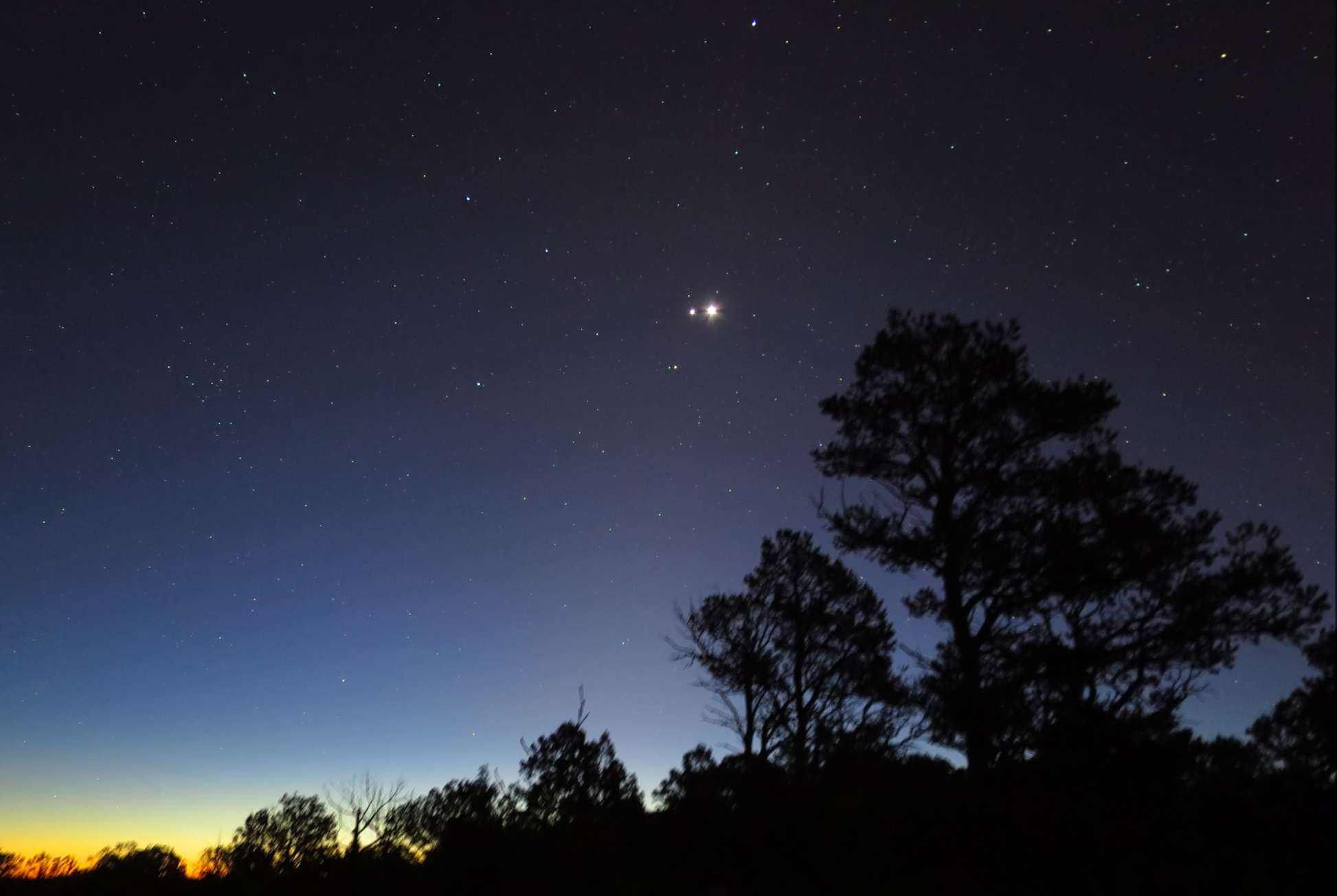Astronomy... Now That’s a Heavenly Hobby!
Ever since I was a young kid growing up in rural Eau Gallie I’ve been fascinated with the night sky. It’s been a hobby that has stuck with me all my life. About ten years ago I started learning astrophotography. It was a natural merging with my other hobby, photography. And these days, being a computer hobbyist also helps since much of the processes are now computer controlled or manipulated.
What? You want pictures?
Check out my astrophotography section!

Venus-Jupiter-Mars Conjunction
Every now and then multiple planets line up in the same section of the sky. Venus, Jupiter and Mars did that in October. This image shows Venus and Jupiter side-by-side on the morning of Oct 25th. At that time they were just to the right of the constellation Leo, the Lion. Leo and the three planets are still visible in the morning sky before sunrise but they are spreading further apart now.
What’s In the Sky Tonight?
Even though winter is fast approaching, the impressive summer Milky Way can still be seen under dark skies. Look for it about an hour after sunset in the western sky. Try to pick out the “Summer Triangle” stars of Altair, Deneb and Vega. The Milky Way will be will span from south to north in the same part of the sky.
The familiar Big Dipper is easy to spot in the northern sky. It’s actually part of the constellation Ursa Major, the Big Bear. The second star from the end of the handle is Mizar and it has a very close companion called Alcor. They’re called an optical double star because they aren’t physically related. Most people, like me, see them as one star. Those with keen vision can make out both. How about you? One star or two??